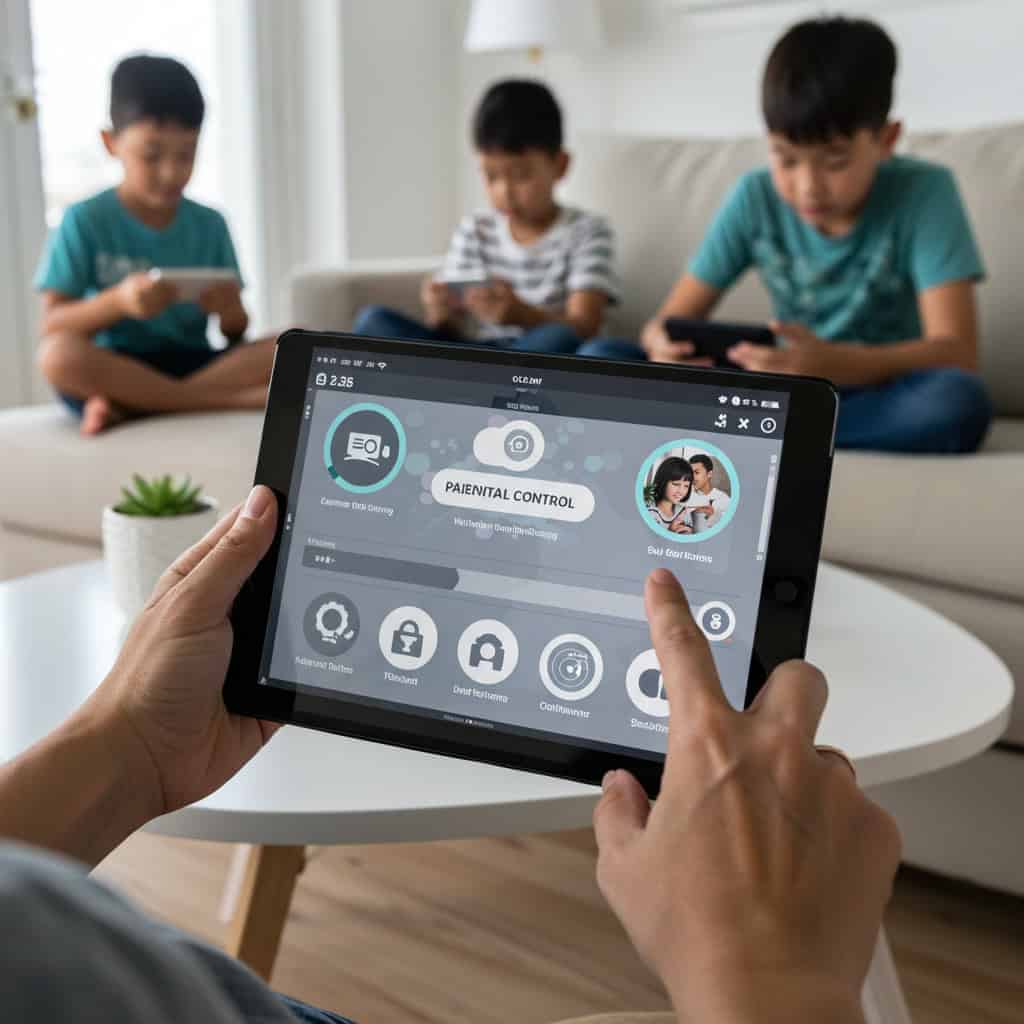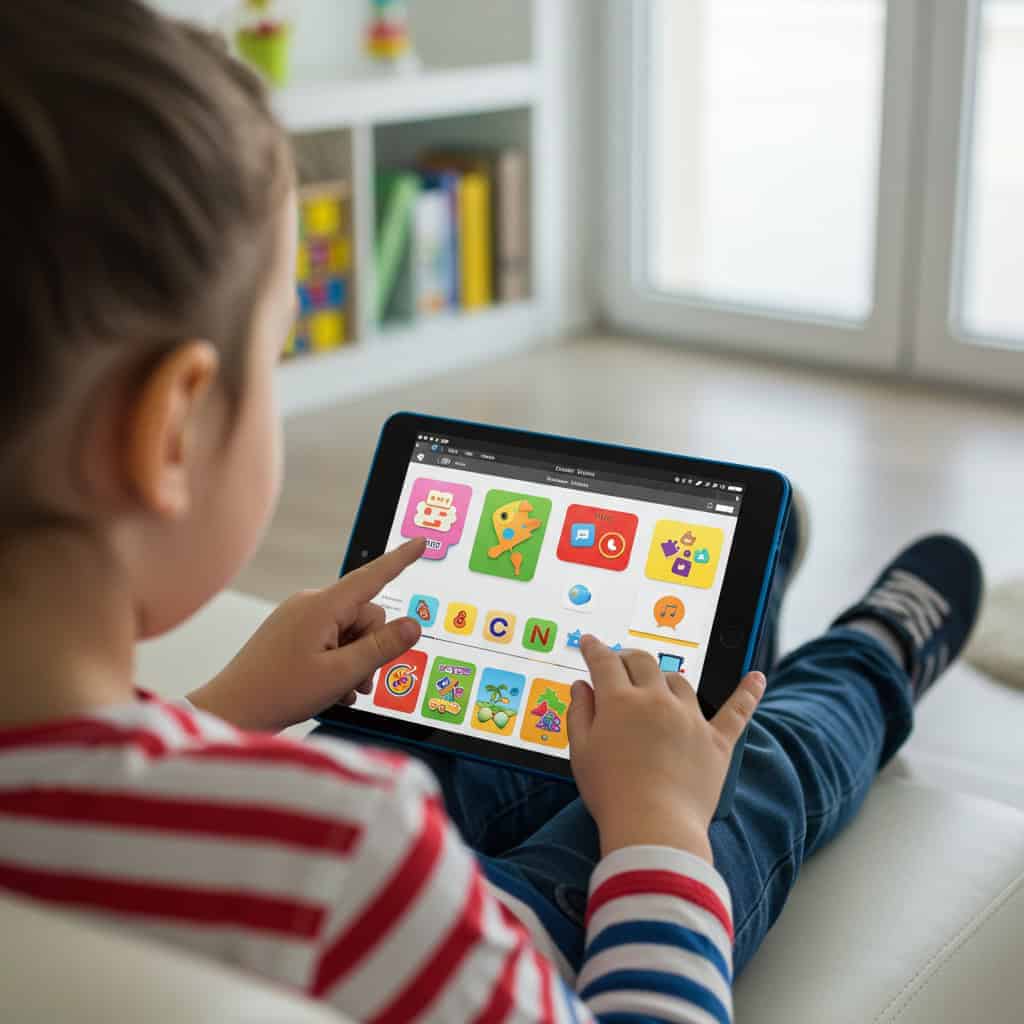14 Screen-Time Rules That Actually Work
Screen time is a part of daily life, but finding a healthy balance can be challenging in a tech-driven world. Establishing clear rules not only helps manage device use but also encourages better habits, improved sleep, and more meaningful connections. Here are 14 practical, research-backed screen-time strategies proven to work for households of all kinds.
1. Set Consistent Daily Limits

Establishing clear daily screen-time limits helps children and adults develop healthy digital habits. Setting age-appropriate guidelines and sticking to them consistently is recommended. For example, younger children may need shorter durations, while older kids can handle more, as long as time is managed. Consistency is key—set and enforce these limits daily to encourage balance and avoid constant negotiations or confusion about expectations.
2. Create Device-Free Zones

Designating areas like bedrooms and dining rooms as device-free zones can significantly reduce the temptation to use screens and foster stronger family connections. Keeping screens out of bedrooms improves sleep quality, while device-free dining encourages meaningful conversations. By clearly defining these boundaries, families can enjoy more present, distraction-free moments together and reinforce the importance of in-person interaction.
3. Make Screen Time Earned, Not Automatic

Implementing a system where screen time must be earned—for example, after chores, homework, or physical activity—teaches responsibility and prioritizes healthy routines. Using screen time as a reward rather than a default activity is suggested. This approach encourages kids to complete essential tasks first, making digital entertainment a privilege rather than an expectation, and helps instill lifelong habits of balance and accountability.
4. Use Parental Controls and Monitoring Tools

Leveraging parental controls and monitoring tools helps families filter inappropriate content and track screen usage effectively. Many devices and apps offer built-in features to set time limits, restrict certain websites, and review activity reports. These tools empower parents to guide their children’s digital experiences and ensure safety. Regularly reviewing and adjusting settings keeps online interactions age-appropriate and supports open conversations about responsible technology use.
5. Schedule Device-Free Family Time

Intentionally planning device-free family time—such as board games, shared meals, or outdoor adventures—strengthens relationships and fosters healthy communication. By regularly setting aside tech-free moments, families can focus on meaningful connections, model mindful technology use, and create cherished memories away from screens.
6. Model Healthy Screen Habits

Children learn by example, so it’s essential for adults to demonstrate balanced technology use. When parents prioritize face-to-face interactions, put devices away during meals, and set their own limits, kids are more likely to adopt similar behaviors. Modeling mindful screen habits helps reinforce family rules and shows that technology can be used in moderation as part of a healthy lifestyle.
7. Prioritize Educational and Creative Content

Choosing high-quality educational and creative content over purely passive entertainment enhances learning and skill development. Parents should find apps, games, and shows that inspire curiosity and creativity. Prioritizing these options ensures screen time is not just fun but also enriching, supporting cognitive growth and encouraging kids to engage actively rather than simply consume digital media.
8. Turn Off Screens One Hour Before Bed

Instituting a screen curfew at least one hour before bedtime helps improve sleep quality for both children and adults. Exposure to blue light from screens can disrupt melatonin production and delay sleep onset. Establishing a tech-free wind-down routine promotes better rest, more consistent sleep schedules, and healthier bedtime habits for the whole family.
9. Involve Kids in Rule-Setting

Inviting children to participate in creating screen-time rules increases their understanding and willingness to follow guidelines. Collaborative rule-setting encourages open dialogue and teaches decision-making skills. When kids feel their opinions are valued, they’re more likely to respect boundaries and internalize healthy habits, resulting in smoother enforcement and fewer conflicts over device use.
10. Encourage Alternative Activities

Offering engaging offline alternatives—such as sports, reading, or creative crafts—helps reduce dependence on screens for entertainment. Promoting activities that stimulate imagination and physical movement is recommended. By making these options easily accessible and enjoyable, families can inspire children to pursue diverse interests, build new skills, and experience the benefits of a balanced lifestyle away from digital devices.
11. Address Screen Time During Outings and Travel

Managing screen use during outings and travel requires planning and clear expectations. Setting limits for device use in cars, on planes, or in restaurants, and packing alternative entertainment like books, games, or coloring kits is suggested. By preparing ahead and discussing guidelines, families can maintain screen-time boundaries while making travel experiences more interactive and memorable for everyone.
12. Set Clear Consequences for Rule-Breaking

Having consistent consequences for breaking screen-time rules reinforces boundaries and signals that limits are serious. Consequences should be clearly communicated and logically related, such as losing screen privileges for a set period. Following through every time not only deters repeated issues but also helps children understand accountability, making it easier to maintain healthy digital habits in the long run.
13. Use Tech to Connect, Not Isolate

Encourage using screens for shared experiences, such as family video calls, co-viewing movies, or playing interactive games together. Technology can strengthen relationships when used collaboratively rather than in isolation. By prioritizing social and interactive uses of screens, families foster connection, enhance communication skills, and transform technology from a solitary distraction into a tool for meaningful engagement.
14. Regularly Review and Adjust Rules as Needed

It’s vital to revisit screen-time rules periodically to ensure they remain effective as children grow and technology evolves. Regular family discussions is recommended to assess what’s working and what needs updating. Flexibility allows guidelines to adapt to new devices, changing schedules, or emerging digital trends, ensuring screen-time management continues to support healthy habits and balanced family life.
Conclusion

Establishing clear and adaptable screen-time rules is essential for fostering healthy digital habits and nurturing strong family bonds. By proactively setting boundaries, involving everyone in the process, and being willing to adjust as needs change, families can enjoy the benefits of technology while minimizing its risks. Practicing mindful tech use helps create a balanced, connected household.
.article-content-img img { width: 100% }




